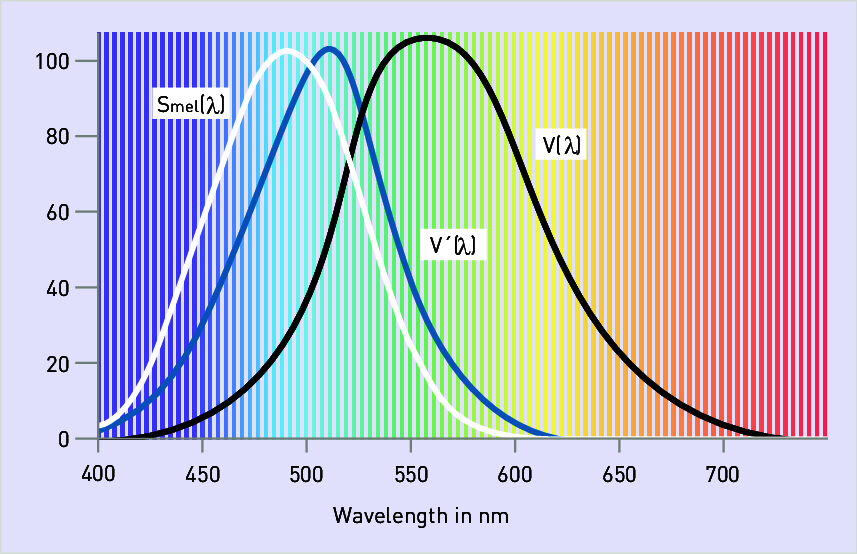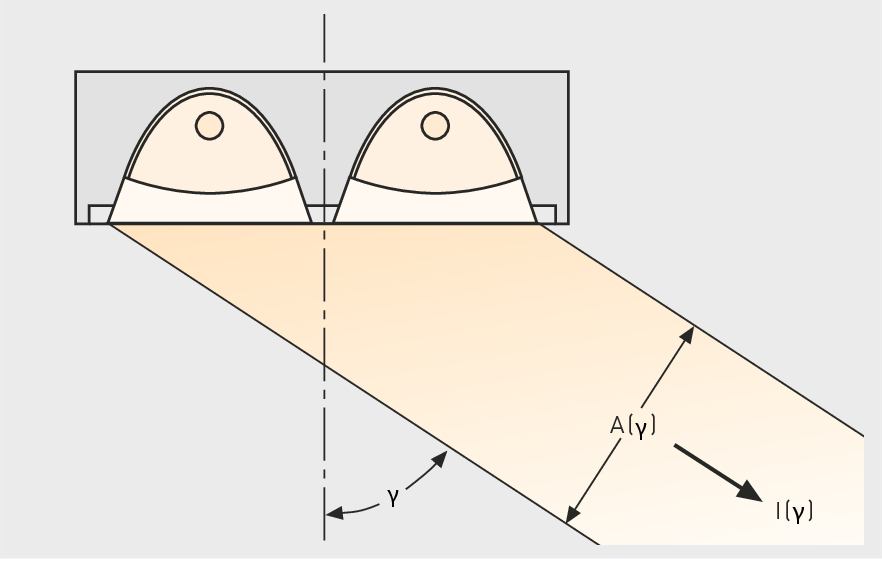Change in focal length of the lens of the eye (optical power change).
A
Adjustment of the eye’s sensitivity to changing visual conditions, especially ambient luminance. Dark adaptation is the adjustment of the eye’s sensitivity to low ambient luminance. It takes longer than light adaptation. At an ambient luminance below 0,03 cd/m2 (some individuals below 0,003 cd/m2), the eye is adapted to darkness and the degree of luminous efficiency for scotopic vision V′(λ) applies. Light adaptation is the adjustment of the eye’s sensitivity to increased ambient luminance. Upwards of an ambient luminance of 3 cd/m2 (some individuals upward of 30 cd/m2), the human eye is adapted to light and the degree of luminous efficiency for photopic vision V(λ) applies. The process of light adaptation is quicker than the process of dark adaptation.

(Ez) Average cylindrical illuminance Ez is the local average of the cylindrical illuminance (identified through a horizontal bar on top of the letter E) on the reference surface or in the visual task area. A temporal average is not defined in photometrics.
(E) Average illuminance E is the local average of the illuminance (identified through a horizontal bar on top of the letter E) on the reference surface or in the visual task area. A temporal average is not defined in photometrics.
(L) Local average of the luminance (identified through a horizontal bar on top of the letter L) on the reference surface. (Average) luminance is generally dependent on the viewing angle at which the object is observed. A temporal average is not defined in photometrics.

